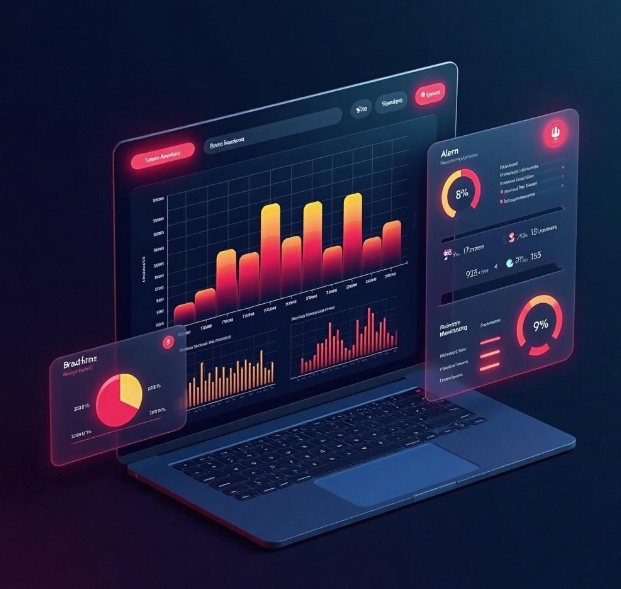How to prevent point system loopholes in operating a points mall?
- latest articles
- 1.DApp Development & Customization: Merging Diverse Market Needs with User Experience 2.Analysis of the Core Technical System in DApp Project Development 3.How to achieve cross-chain interoperability in Web3 projects? 4.How does the tokenization of points reconstruct the e-commerce ecosystem? 5.How to Set and Track Data Metrics for a Points Mall? 6.What is DApp Development? Core Concepts and Technical Analysis 7.Inventory of commonly used Web3 development tools and usage tips 8.Development of a Distribution System Integrated with Social E-commerce 9.Six Key Steps for Businesses to Build a Points Mall System 10.What is DApp Development? A Comprehensive Guide from Concept to Implementation
- Popular Articles
- 1.Future Trends and Technology Predictions for APP Development in 2025 2.Analysis of the DeFi Ecosystem: How Developers Can Participate in Decentralized Finance Innovation 3.From Zero to One: How PI Mall Revolutionizes the Traditional E-commerce Model 4.DAPP Development | Best Practices for Professional Customization and Rapid Launch 5.Recommended by the Web3 developer community: the most noteworthy forums and resources 6.From Cloud Computing to Computing Power Leasing: Building a Flexible and Scalable Computing Resource Platform 7.How to Develop a Successful Douyin Mini Program: Technical Architecture and Best Practices 8.Shared Bike System APP: The Convenient Choice in the Era of Smart Travel 9.How to Create a Successful Dating App: From Needs Analysis to User Experience Design 10.From Design to Development: The Complete Process of Bringing an APP Idea to Life
With the continuous development of internet technology, points malls have become an important tool for many businesses and merchants to attract and retain customers. The basic mechanism of a points mall involves users earning points through activities like purchases and check-ins, which can then be redeemed for products or discounts in the mall. However, as points malls become more widespread and operational models evolve, point farming behaviors and vulnerabilities have also emerged. These vulnerabilities not only affect merchant profits but can also harm the customer experience, and in severe cases, damage a brand's reputation and credibility. Therefore, preventing point farming vulnerabilities has become a critical issue in operating points malls.
I. Common Forms of Point Farming Vulnerabilities
Before delving into how to prevent point farming vulnerabilities, it's essential to understand their common forms. Point farming vulnerabilities typically refer to users accumulating large amounts of points through illegitimate means, thereby obtaining undeserved products or services in the points mall. Here are several common forms:
1. Automated Point Farming Tools
Automated point farming tools are scripts or software developed by malicious actors to simulate normal user behaviors (such as check-ins, purchases, reviews) to earn points. These tools can perform operations rapidly and in large volumes, accumulating substantial points in a short time. This not only disrupts the normal operation of the points mall but can also render marketing campaigns ineffective.
2. Abnormal Point Accumulation
Some users may acquire unusually large amounts of points through special methods. For example, users might register multiple accounts for fake check-ins or exploit vulnerabilities in the points mall to farm points. Such abnormal accumulation methods are often difficult for the system to detect, and by the time they are discovered, significant losses may have already occurred.
3. Points Trading Platforms
Some users sell or transfer points to others through points trading platforms, and there may even be black market transactions. This not only undermines the fairness of the points mall but can also devalue the points, negatively impacting legitimate users.
4. Exploiting System Vulnerabilities for Malicious Operations
Some points malls may have system vulnerabilities in their design that hackers or users can exploit for malicious activities. By tampering with data, injecting malicious code, etc., malicious users can obtain undeserved points or even engage in point "farming."
II. Measures to Prevent Point Farming Vulnerabilities
1. Strengthen Account Registration and Verification Mechanisms
To prevent point farming through bulk registration of fake accounts, merchants can limit malicious user behavior by enhancing account registration and verification mechanisms. Common protective measures include:
Mobile Number Verification: Use mobile numbers for registration verification to prevent malicious users from creating multiple accounts with fake information.
Email Verification: Ensure each user is real and prevent individuals from having multiple accounts through email verification.
CAPTCHA Mechanism: Implement CAPTCHA to prevent automated point farming tools from operating.
Real-Name Authentication: Require users to undergo real-name authentication to further ensure account authenticity and uniqueness.
Through these verification methods, merchants can effectively reduce fake account registrations and lower the risk of point farming.
2. Real-Time Monitoring and Data Analysis
Real-time monitoring and data analysis are key measures to prevent point farming vulnerabilities. Merchants can monitor the normal operation of the points mall and promptly detect point farming behaviors through the following methods:
Behavioral Analysis: Analyze user behavior data to identify abnormal operations. For instance, earning large amounts of points in a short time, frequent logins from the same IP address, or repeated similar actions by a single account may indicate point farming.
Abnormal Point Accumulation Detection: Set reasonable ranges for point accumulation; growth beyond predefined limits should raise alerts. For example, rapid accumulation of points in a short period should trigger warnings, and accounts may be frozen for manual review if necessary.
Monitor Check-ins and Redemptions: Check-ins and redemptions are common targets for point farming. Merchants can set rules, such as daily check-in limits and maximum daily redemptions per user, to prevent abnormal accumulation.
3. Strictly Control Point Acquisition Methods
Merchants should establish reasonable point acquisition rules and strictly control how points are earned to prevent users from farming points through illegitimate channels. Specific measures include:
Limit Point Acquisition Methods: Offer diverse ways to earn points, but set clear limits for each method. For example, points can be earned through purchases, check-ins, or sharing, but each channel should have a cap to prevent excessive farming.
Prohibit Abnormal Behaviors: Promptly restrict and penalize behaviors like fake orders, malicious purchases, or false reviews. For instance, freeze points for users with frequent returns or revoke points for fake reviews.
Manual Review: Implement manual review for large point acquisitions to ensure they are legitimate and comply with rules.
4. Enhance Anti-Farming Technologies and Tools
Preventing the use of automated point farming tools is crucial to avoiding vulnerabilities. Merchants can improve their anti-farming capabilities through the following technical measures:
IP Address and Device Fingerprint Recognition: By identifying user IP addresses and device fingerprints, merchants can detect if multiple operations are being performed from the same IP or device in a short time. If anomalies are found, restrict operations from that IP or device.
Anti-Cheating Algorithms: Develop anti-cheating algorithms using machine learning and data analysis to detect abnormal operations in real-time. For example, if the system notices a user performing numerous check-ins or purchases in a very short time, the algorithm can flag this and take preventive actions.
Dynamic CAPTCHA: CAPTCHA is a common method to prevent automated tools. To avoid traditional CAPTCHAs being cracked, use dynamic CAPTCHAs that require user input for specific operations, increasing the difficulty for automated tools.
5. Reasonably Set Point Usage Rules
Anti-farming strategies should not only focus on point acquisition but also on point usage. Merchants can limit point abuse through the following methods:
Point Expiration Mechanism: Set rules for point expiration to prevent users from hoarding points for long periods before redeeming. Regularly clear expired points to maintain fairness.
Redemption Limits: Set maximum redemption limits per user to prevent bulk redemptions through point farming. Additionally, tailor redemption rules based on user purchase history and point accumulation to prevent misuse.
Link Points to Consumption: Tie point earnings to consumption ratios, ensuring users earn more points only after making substantial purchases, thus preventing undeserved rewards from point farming.
6. Strengthen User Credit Systems
Building a robust user credit system is an effective way for merchants to prevent point farming vulnerabilities. Through credit point accumulation and management, merchants can better distinguish between honest and malicious users. Specific approaches include:
Credit Rating: Rate users based on their transaction history, reviews, and behavior. High-credit users can enjoy more point rewards and benefits, while low-credit users face restrictions.
Points Blacklist Mechanism: Add users frequently involved in point farming or malicious activities to a blacklist, restricting their ability to earn points or redeem products.
III. Conclusion
When operating a points mall, preventing point farming vulnerabilities is not only crucial for protecting merchant interests but also essential for ensuring user experience and fairness. By strengthening account registration and verification, implementing real-time monitoring and data analysis, strictly controlling point acquisition methods, enhancing anti-farming technologies and tools, reasonably setting point usage rules, and strengthening user credit systems, merchants can effectively prevent point farming vulnerabilities and maintain the normal operation and fairness of the points mall. As technology evolves and operational models innovate, merchants should continuously optimize prevention mechanisms, promptly identify and address potential risks to uphold their reputation and user trust.
-

How does the tokenization of points reconstruct the e-commerce ecosystem?
With the continuous advancement of internet technology and the gradual prolifera···
-

How to Set and Track Data Metrics for a Points Mall?
With the rapid development of the e-commerce industry, points malls, as a common···
-

Development of a Distribution System Integrated with Social E-commerce
With the rapid development of internet technology, the e-commerce industry has e···

 Blockchain
Blockchain












